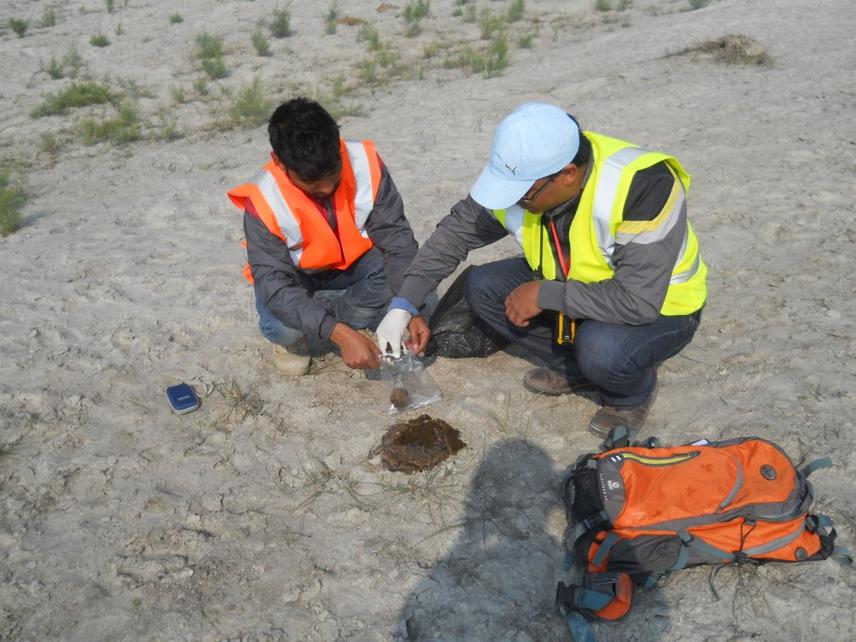Tej Kumar Shrestha
Nutrient content and feeding ecology of wild water buffalo (Bubalus arnee) will determine the carrying capacity and circumstances to translocate this species from KTWR. This project will also assess the Ecosystem services offered by this species and perform the conservation awareness campaign within target groups.

Dung collection.
The wild water buffalo (Bubalus arnee) is scheduled as Endangered on the IUCN Red List since 1986 and listed under Appendix III of CITES in Nepal. Less than 4,000 populations remain worldwide with 259 individuals in Nepal existing only in Koshi Tappu Wildlife Reserve (KTWR) with no exact figure of purebred. Insufficient numbers of researches conducted inside KTWR have concluded that there is increase in number of this species which causes competition for food and thus forced these wild species to rely on farmland which is ultimate reason for human wildlife conflict. However, there are no information regarding the wild water buffalo feeding ecology, food and feeding habits and how anthropogenic pressures affect wild water buffalo habitat. Similarly, the evaluation of health or body condition of wild water buffalo based on habitat quality and quantity in disturbed and undisturbed habitats is also unknown. Although the information on range of wild water buffalo occurrence has been considered to be a low land of Terai; there are no available evidences on the potential and actual habitat for the wild water buffalo in Nepal.
This research will be based on Literature Review, detail field study, laboratory tests for nutrient contents of feeding species and public involvement. This research will adopt Drivers-Pressure-State-Impact-Response (DPSIR) model for overall project.
This research will focus on the feeding ecology of the wild water buffalo and nutrient content of feeding species within KTWR. The findings will help to determine the carrying capacity of KTWR in terms of available food and support to develop conservation action plan. In addition the findings will support to determine the best potential sites outside KTWR in terms of available food resources which are essential to conserve the viable population in KTWR and create fresh population outside the KTWR. The project will raise the conservation education in local level about conservation species; minimize the cross breeding with domestic buffalo and reduce human wild water buffalo conflict in the region.
The outcome of this research will ultimately help the Department of National Park and Wildlife Conservation (DNPWC) and concerned stakeholders of wild water buffalo conservation for the long term conservation and management of its population in and outside KTWR. This project also aims to establish Wild water buffalo conservation alliance in Nepal for the first time with joint effort from concerned stakeholders.